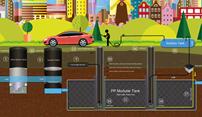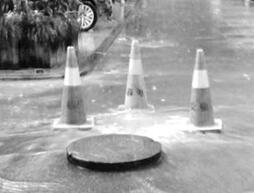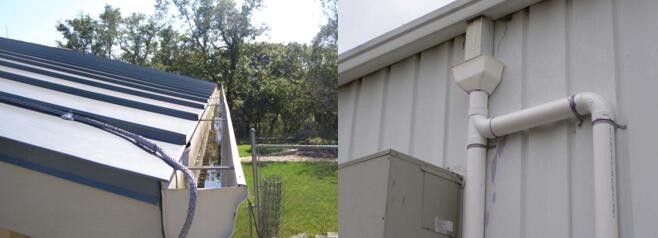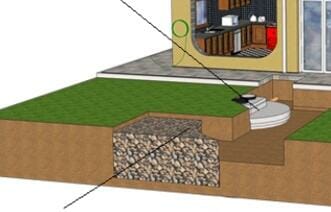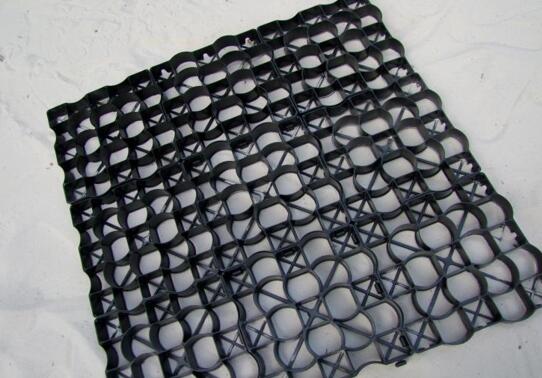When the city is flooded by heavy rains, the ground problem is the key
When the city is flooded by heavy rains, the ground problem is the key, and the city’s waterlogging cannot only look at the drainage system
01

From 20 o’clock on July 19 to 20 o’clock on the 20th of this year, Zhengzhou’s single-day rainfall was as high as 552.5mm. The rainfall in the three days from the 17th to the 20th exceeded 617.1mm. The average annual rainfall in Zhengzhou is only 640.8mm, and these three days are equivalent to three years of rainfall.
From a climatological point of view, the hourly rainfall, daily rainfall, and return period (previous rainfall records) of this heavy rainstorm are rare occurrences in a thousand years.


The history is so similar. Just 9 years ago today, the Beijing area also suffered the strongest torrential rain and the severe urban waterlogging disaster in history. The whole city is also immersed in large water, traffic is paralyzed, roads collapse, houses collapse, and many people are rushed into the large water and disappear without a trace…

After the disaster, people who experienced the disaster will find problems. How can the drainage system in a large city be so vulnerable? However, the problem of urban drainage is still a problem that is often raised. On the one hand, the process of urbanization is accelerated, and on the other hand, it is difficult to rebuild the old urban area. The focus of the problem is still obvious, that is, the long-term planning and vigorous construction of urban water conservancy.
02
Urban water conservancy can be roughly divided into five stages in the process of human urbanization:
The first stage: mainly use surface water conservancy (river and ditches) to solve the problem of water supply and drainage:
The second stage: start to use urban engineering to build system drainage facilities including underground passages. The underground passages in this stage are the “integral system” that discharges urban sewage and rainwater together;
The third stage: At the beginning of the 20th century, urban construction began to establish sewage treatment facilities at the source of water pollution, and pollution prevention began to become the core issue of the urban drainage system;
The fourth stage: start to separate the sewage discharge pipeline from the rainwater discharge pipeline to form a “separation system”;
The fifth stage: After entering the 21st century, urban construction has a longer-term planning concept, namely, the establishment of “ecological infrastructure” and the implementation of comprehensive management methods for drinking water supply, sewage treatment, and rainwater control. freed.

In recent years, the situation of various heavy rain flooded cities in our country appeared in the third and third stages, because most urban drainage systems are still in the “integral system” stage where sewage and rainwater are discharged together, and large-scale urban reconstruction is required. The project can be transformed into a “separation system” in which sewage and rainwater are discharged separately. To this day, this reconstruction project is far from complete, so that many cities often experience waterlogging and heavy rain.
03
Early human cities were based on the water conservancy conditions provided by the natural ecology. As long as the simple use of rivers and artificial ditches can solve the urban drainage problem, once the city develops to a certain scale, it will exceed the capacity of the natural ecology. Drainage capacity. Today we can only rely on more complex and larger engineering technology to completely solve the problem of urban drainage, which also brings a series of problems such as the heavy rain flooded city we are facing today.
It is worth noting that the biggest problem of the city flooded by heavy rains is not the insufficient planning of the drainage system, but the over-construction of the urban ground.


When a city is getting bigger and more advanced, the problem of beautification comes first. At this time, most of the city’s ground is paved with masonry, and then there are a lot of asphalt and cement roads, and now there are buildings everywhere. In other words, it takes a lot of time now to find a dirt road.
Then, the water permeability of these ground is very obvious, especially poor, which will cause a large amount of rainwater to be unable to be quickly absorbed by the ground, until there is a deep accumulation of surface gathered water, this shows the importance of urban drainage.

We all know that the water cycle is the basis for maintaining the ecological environment. Water molecules in nature will enter rivers, lakes and seas, or infiltrate the soil to replenish groundwater. When they are evaporated by solar radiation, they will eventually return to the ground in the form of rainfall or snow. This is the normal water circulation system in nature.
Nowadays, more and more cities use “impermeable ground”. There is no place for water to seep. It can only accumulate more and more on the city’s ground.

Since surface water cannot quickly infiltrate into groundwater, it is difficult for groundwater to evaporate and lift off, so that the solar radiation energy originally used to evaporate water can only be left on the artificial ground to create a “heat island effect”, which will lead to an increase in urban temperature. Will become a good “helper” for the greenhouse effect.
Studies have shown that impermeable ground can turn rainwater into surface gathered water and make cities waterlogged and flooded during heavy rains. At this time, various pollutants on the ground will also be carried into rivers, lakes and seas by surface gathered water, causing deterioration of natural water quality.
04
From the perspective of urban surface gathered water, we can use the impervious surface to account for the proportion of urban ground to define our city:
Areas with 0~10% impermeable ground are rural areas;
Areas containing 10%-25% impermeable ground are suburbs;
Only those with 25%~60% impermeable ground are cities.
At present, 30% to 50% of our earth’s surface has been transformed by humans. Although only 10% belong to real cities, this 10% has become the “severe disaster area” of the water cycle. It is not only a problem of surface gathered water, but also water quality. Various questions about water.
In summary, the treatment of urban impermeable ground is the core of the treatment of urban surface gathered water. For planning and construction problems, Western developed countries have adopted three methods:

1. “Grassed swales” , the construction of cities must conform to and use the “ecological infrastructure” provided by nature, including naturally formed reservoirs, low-lying land in the city, roofs, cellars, and various ditches Wait, let them perform the urban drainage function together.

Birmingham, UK, with a population of more than 2 million, has more than 900 cisterns, large and small, and Halton, with a population of more than 100,000, has 200 low-lying land or small cisterns (roofs or cellars) per square kilometer. Compared with Beijing, although Beijing has many large natural reservoirs such as Shichahai, Beihai, Zhongnanhai, Yuyuantan, and Jishuitan, the available low-lying areas in the city are almost zero, not to mention roofs or cellars.

2. “Biological water-holding cells”, that is, a green buffer ground of several hundred meters is established at the sewage outlets of rivers, lakes and seas, which is equipped with filling materials (replaceable) with good water seepage and filtration performance, and covered with green vegetation. Its function is to prevent urban sewage from being directly discharged into rivers, lakes and seas, that is, to let the green buffer filter out various impurities in urban sewage.

3. Research and develop high-tech such as water-permeable pavement, water-permeable pavement bricks, organic filter materials, etc. Its function is to increase the water permeability of urban ground and strengthen the filtering function of pollutants.
Western developed countries have dealt with the problem of urban surface gathered water for decades. Today, they have done a good job in comprehensive ecological management, not only using ecological drainage, but also maintaining the purity of drinking water sources. In contrast, our urbanization construction still has many places to learn from them.
Conclusion
I have to admit that our urbanization process still has many shortcomings in terms of ecological infrastructure construction, which makes us face the possibility of flooding the city every time it rains. Whether it was the floods in Beijing 9 years ago or the torrential rains in Zhengzhou today, we have experienced disasters and will make us directly face problems and think about solutions.



